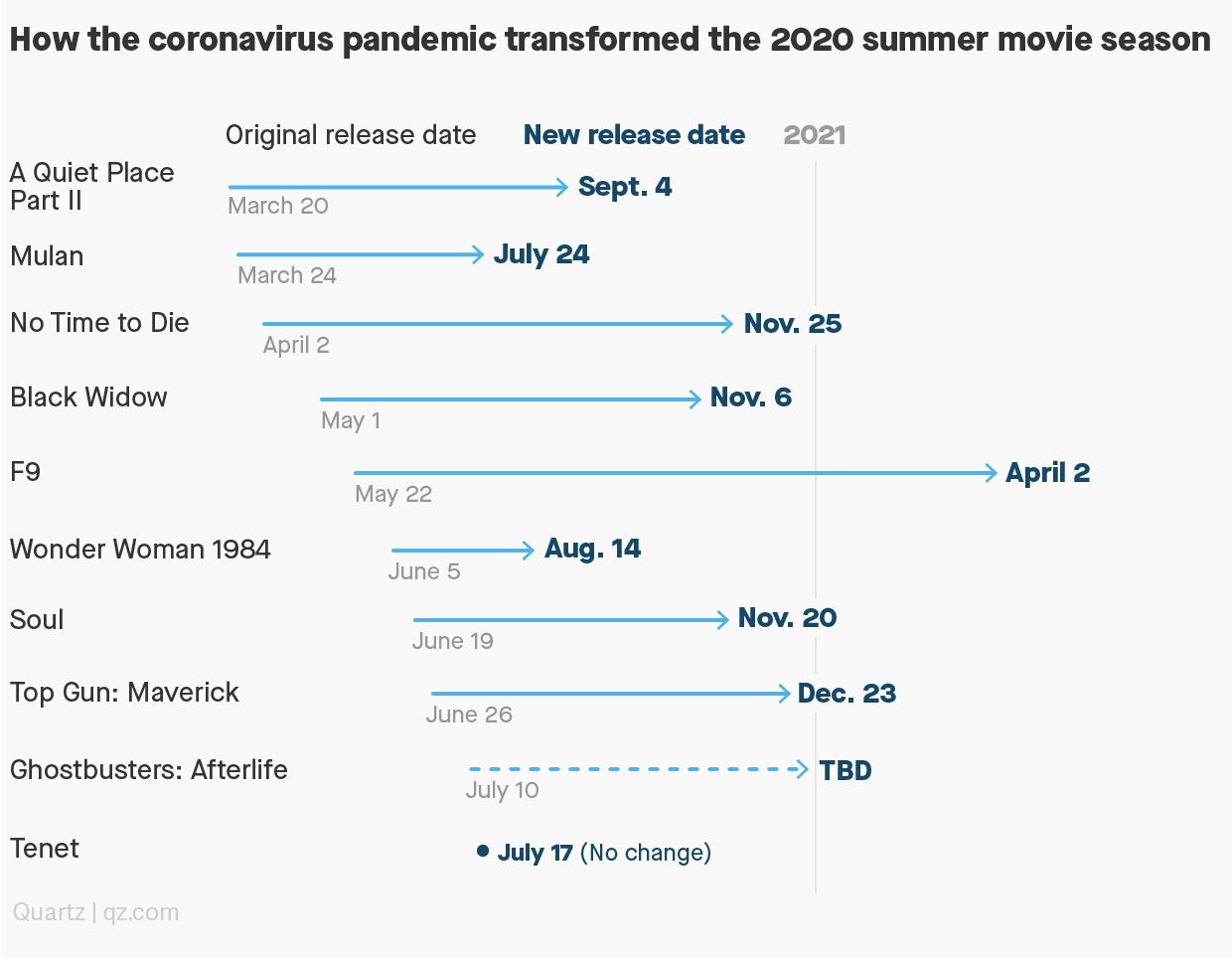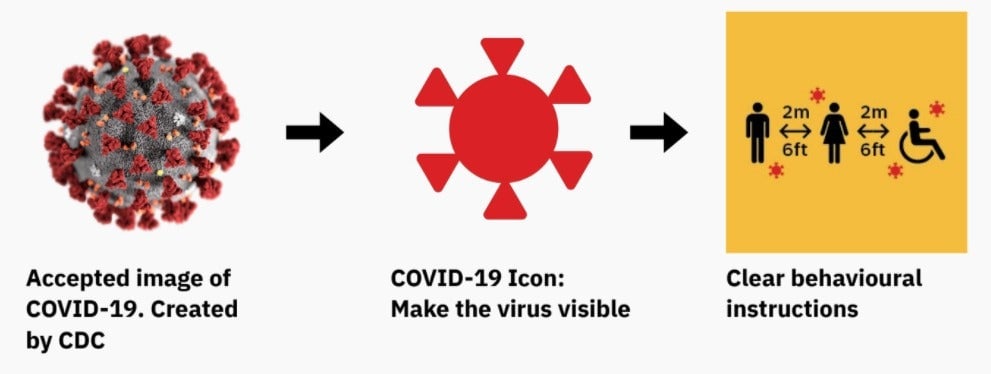Coronavirus: It’s all in the smize
Hello Quartz readers,

Hello Quartz readers,
It’s hard out there for a social smiler. As face masks become a ubiquitous part of post-lockdown life, we’ve found ourselves missing the days of sharing polite smiles with neighbors, cashiers, and people walking cute dogs.
Fortunately, history gave us a prophet. Back in 2009, supermodel Tyra Banks coined “smizing” to describe smiling with your eyes. Here’s how it’s done:
- Relax your face.
- Think of something “that makes you feel delicious.”
- Squint your eyes a little, mostly from the bottom, while envisioning that thing.
Don’t you look warm and inviting?

OK, let’s get started.
Take a bike
In the US these days, bikes under $1,000 are almost impossible to keep in stock, appointments to tune up old rides are booked weeks in advance, and trail rides are up 57% over last year. The pandemic’s impact on public transportation, coupled with a lockdown-induced thirst for fresh air, has sent thousands back onto bicycles (✦ Quartz member exclusive). What’s emerging is the largest urban transportation experiment in a generation.
“We are seeing evidence that in cities opening back up, commuters returning to work are shunning public transportation and increasingly relying on shared bikes,” says Asad Hussain, a mobility analyst for private equity research firm PitchBook.
Already, supplies are stretched thin. Most bikes are manufactured in Asia, and the coronavirus shutdown slowed production just as sales picked up. Across the US, sales of bicycles and shop services shot up to $733 million in March, according to market research firm NPD, a 44% jump over last year. Families and fitness fans are the biggest buyers: Sales of recreational bikes rose 121% to nearly 250,000 in March, while stationary exercise bikes and indoor stands nearly tripled to about 200,000 units.
REI, a national outdoor gear store, said it is selling four times as much cycling equipment as the same time last year, including adult bikes, kids’ bikes, and accessories. “We do not expect sales to slow down in the near term, as long as supply can keep up,” merchandising manager Ron Thompsen wrote by email.
Many cities are actively facilitating increased cycling. London mayor Sadiq Khan said the city will ban cars on many streets, creating one of the largest car-free zones in the world. Brussels rapidly repurposed car lanes for bikes, then made those changes permanent. France is dedicating more than 400 miles of bike lanes in the Paris metropolitan area, and spending €20 million (~$22 million) to subsidize bike repairs, install temporary bike racks, and offer cycling courses.
In America, the path is less certain, says PitchBook’s Assad. In Europe and Asia, where car ownership is less common, a shift toward shared mobility—ride hailing and shared fleets of bikes and scooters—is underway. But the United States’ penchant for cheap cars, plus its extensive automobile infrastructure, means personal car ownership is likely to increase in the short term.
Are you considering biking more?
A few emails ago, we asked if you would participate in a challenge trial for a coronavirus vaccine. The results are in: 48% of you said no thanks, 16% said yes please, and 36% said you’d need some more details first.
Turning over a new brief
With the coronavirus living briefing, we’re tracking how Covid-19 is affecting major aspects of the global economy. You can check in every business day for the newest updates, or become a Quartz member to get access to the full briefing. Here’s what we’re watching this week:
✈️ Airlines: In the first several weeks after India’s reopening, flights were filled to about 70% of capacity—much higher than the expected 25%.
⚡️ Energy: BP is cutting 10,000 jobs from its 70,000-person workforce, and freezing salaries for senior employees until March 2021.
🇨🇳 China’s economy: The economic slowdown gave China a record trade surplus in May, after imports dropped faster than exports.
🇺🇸 The US job market: Americans’ expectations for a pay raise grew in May over April, and 38.9% of people think the unemployment rate will be higher in 12 months.
✦ Remember, Quartz members get unlimited access to our stories, presentations, field guides, and workshops, plus exclusive videos of staffers practicing smizing in the mirror. Join today with a 40% discount, or try a seven-day free trial and see how it feels. ✦
Pause patrol
Movie theaters are cautiously beginning to reopen this month, but it’s already too late for the majority of summer blockbusters. Many have been postponed, while others were forced to go the digital rental or straight-to-streaming routes. Some have yet to announce new release dates.
Now that the dust is settling, we compared what the 2020 summer blockbuster calendar should have looked like to what it is now. Here are some highlights:

It’s a sign
A well-made sign is a potent weapon in the fight against Covid-19, but it takes a lot to design a good one. Coronavirus signs typically suggest a change in behavior—discarding old habits for safer practices—and that’s never an easy thing, explains Tim Fendley, creative director of London-based consultancy Applied Wayfinding. Each public sign is a distillation of human psychology, cultural anthropology, urban design, user design principles, and graphic design.
The good news is, we already know what works:
- It’s not about branding. Creating a good sign isn’t about matching colors or fonts to complement a corporate logo. A good warning sign needs to be visible, direct, and clear.
- Design for fast thinking. If you have to stop and consider what a sign means, it’s already failed. For Covid-19, Applied took the CDC’s widely-circulated red coronavirus ball and translated it into a graphic.
- Consider “progressive disclosure.” Signage is not just about what you say, but when you say it. Instead of creating a big poster listing all the rules at the front of an office, it’s better to guide people through a space with a series of cues.

Essential reading
- The latest 🌏 figures: 7,174,925 confirmed cases; 3,337,363 classified as “recovered.
- Light reading: Vaccines’ potential pitfalls are public—just check the SEC filings.
- Excess baggage: Cargo is rescuing Indian airlines, as humans remain reluctant to fly.
- Employ thyself: Beijing’s sudden love for street vendors shows how worried it is about jobs.
- Color blind: France’s data collection rules obscure the racial disparities of Covid-19.
- Asking for a colleague: How will companies decide who goes back to the office first?
Our best wishes for a healthy day. Get in touch with us at [email protected], and live your best Quartz life by downloading our app and becoming a member. Today’s newsletter was brought to you by Michael Coren, Max Lockie, Adam Epstein, Anne Quito, and Kira Bindrim.